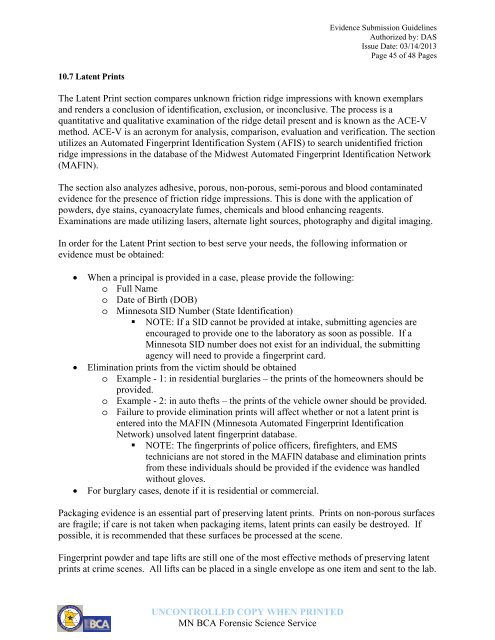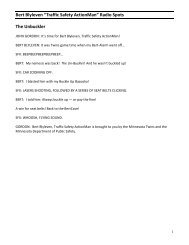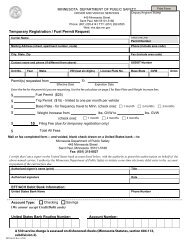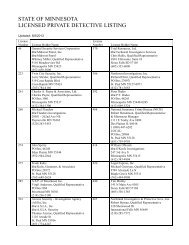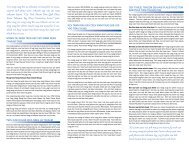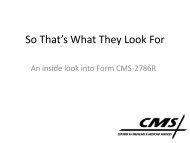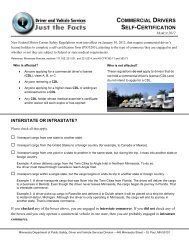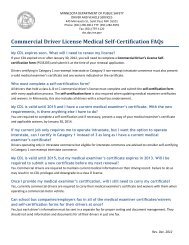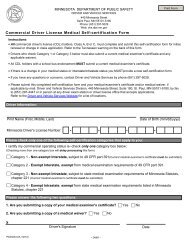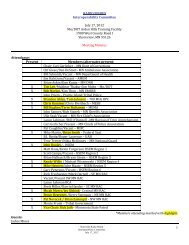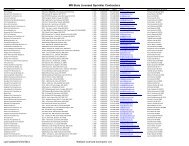Evidence Submission Guidelines - Minnesota Department of Public ...
Evidence Submission Guidelines - Minnesota Department of Public ...
Evidence Submission Guidelines - Minnesota Department of Public ...
You also want an ePaper? Increase the reach of your titles
YUMPU automatically turns print PDFs into web optimized ePapers that Google loves.
10.7 Latent Prints<br />
UNCONTROLLED COPY WHEN PRINTED<br />
MN BCA Forensic Science Service<br />
<strong>Evidence</strong> <strong>Submission</strong> <strong>Guidelines</strong><br />
Authorized by: DAS<br />
Issue Date: 03/14/2013<br />
Page 45 <strong>of</strong> 48 Pages<br />
The Latent Print section compares unknown friction ridge impressions with known exemplars<br />
and renders a conclusion <strong>of</strong> identification, exclusion, or inconclusive. The process is a<br />
quantitative and qualitative examination <strong>of</strong> the ridge detail present and is known as the ACE-V<br />
method. ACE-V is an acronym for analysis, comparison, evaluation and verification. The section<br />
utilizes an Automated Fingerprint Identification System (AFIS) to search unidentified friction<br />
ridge impressions in the database <strong>of</strong> the Midwest Automated Fingerprint Identification Network<br />
(MAFIN).<br />
The section also analyzes adhesive, porous, non-porous, semi-porous and blood contaminated<br />
evidence for the presence <strong>of</strong> friction ridge impressions. This is done with the application <strong>of</strong><br />
powders, dye stains, cyanoacrylate fumes, chemicals and blood enhancing reagents.<br />
Examinations are made utilizing lasers, alternate light sources, photography and digital imaging.<br />
In order for the Latent Print section to best serve your needs, the following information or<br />
evidence must be obtained:<br />
When a principal is provided in a case, please provide the following:<br />
o Full Name<br />
o Date <strong>of</strong> Birth (DOB)<br />
o <strong>Minnesota</strong> SID Number (State Identification)<br />
NOTE: If a SID cannot be provided at intake, submitting agencies are<br />
encouraged to provide one to the laboratory as soon as possible. If a<br />
<strong>Minnesota</strong> SID number does not exist for an individual, the submitting<br />
agency will need to provide a fingerprint card.<br />
Elimination prints from the victim should be obtained<br />
o Example - 1: in residential burglaries – the prints <strong>of</strong> the homeowners should be<br />
provided.<br />
o Example - 2: in auto thefts – the prints <strong>of</strong> the vehicle owner should be provided.<br />
o Failure to provide elimination prints will affect whether or not a latent print is<br />
entered into the MAFIN (<strong>Minnesota</strong> Automated Fingerprint Identification<br />
Network) unsolved latent fingerprint database.<br />
NOTE: The fingerprints <strong>of</strong> police <strong>of</strong>ficers, firefighters, and EMS<br />
technicians are not stored in the MAFIN database and elimination prints<br />
from these individuals should be provided if the evidence was handled<br />
without gloves.<br />
For burglary cases, denote if it is residential or commercial.<br />
Packaging evidence is an essential part <strong>of</strong> preserving latent prints. Prints on non-porous surfaces<br />
are fragile; if care is not taken when packaging items, latent prints can easily be destroyed. If<br />
possible, it is recommended that these surfaces be processed at the scene.<br />
Fingerprint powder and tape lifts are still one <strong>of</strong> the most effective methods <strong>of</strong> preserving latent<br />
prints at crime scenes. All lifts can be placed in a single envelope as one item and sent to the lab.


